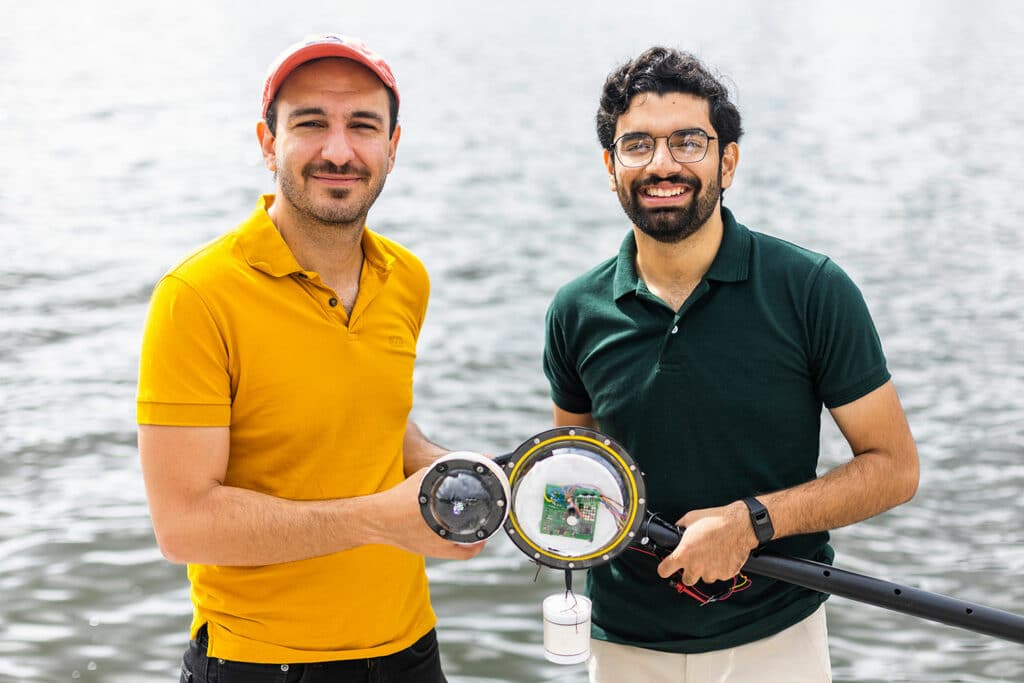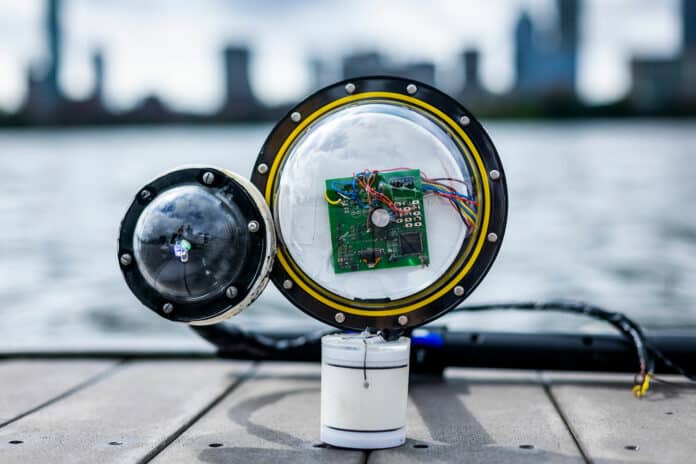Imaging underwater environments is of great importance to marine sciences. Despite advances in underwater imaging, most of the ocean and marine organisms remain unobserved and undiscovered. Existing methods for underwater imaging are unsuitable for scalable, long-term, in situ observations because they require tethering for power and communication.
MIT researchers have taken a major step to overcome this problem by developing a battery-free, wireless underwater camera powered by sound waves that come from any source, like a passing ship or marine life. This innovative device can take pictures even in dark underwater environments while wirelessly transmitting image data through the water.
To build a camera that could operate autonomously for long periods, the researchers needed a device that could harvest energy underwater on its own while consuming very little power. The undersea camera device does not need batteries as a power source, as – thanks to special piezoelectric materials – it converts mechanical energy from the vibrations of sound waves traveling through water into electrical energy.
The camera stores harvested energy until it has built up enough to power the electronics that take photos and communicate data. The camera also uses sound waves to send the data to a receiver outside the water, which recreates the image.

Scientists estimate that over 95% of Earth’s oceans have never been observed, which means we have seen less of our planet’s ocean than we have on the far side of the moon or the surface of Mars. A difficulty to date has been powering an underwater camera for a long period of time, which requires a hardwired connection to a research vessel or mission vessel to periodically recharge its batteries.
To keep power consumption as low as possible, the researchers used off-the-shelf, ultra-low-power imaging sensors. When the camera captures an image, it shines a red LED and then uses image sensors to take the photo. It repeats the same process with green and blue LEDs. Even though the image looks black and white, the red, green, and blue colored light is reflected in the white part of each photo. When the image data are combined in post-processing, the color image can be reconstructed.
The new camera is an important step in overcoming this problem, as it is approximately 100,000 times more energy efficient than any other underwater camera. Also, because it does not need its own power source, it can operate continuously for several weeks and thus will allow scientists to study hitherto unknown areas of the oceans, looking for new species of fish, marine pollution, effects of climate change, etc.
Now that the team has demonstrated a working prototype, they plan to enhance the device, so it is practical for deployment in real-world settings. Researchers want to increase the camera’s memory so it can capture photos in real time, stream images, or even shoot underwater videos. They also want to extend the camera’s range. So far, the camera has successfully transmitted data 40 meters from the receiver, but pushing that range wider would enable the camera to be used in more underwater settings.
Journal reference:
- Sayed Saad Afzal, Waleed Akbar, Osvy Rodriguez, Mario Doumet, Unsoo Ha, Reza Ghaffarivardavagh and Fadel Adib. Battery-free wireless imaging of underwater environments. Nature Communications 13, 5546 (2022). DOI: 10.1038/s41467-022-33223-x
